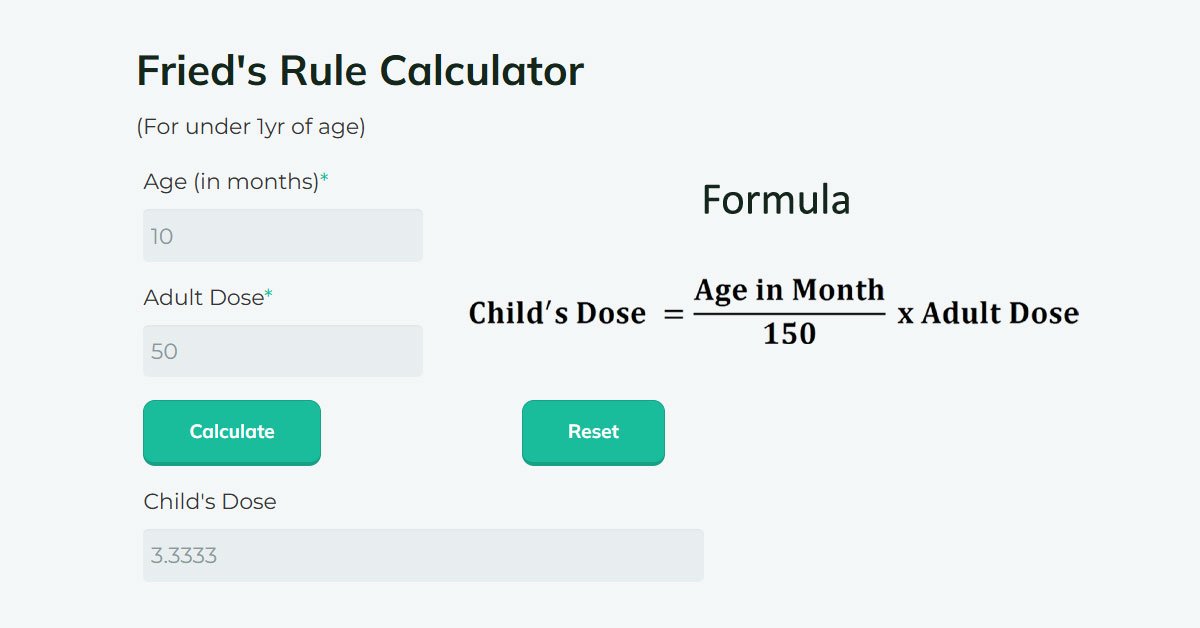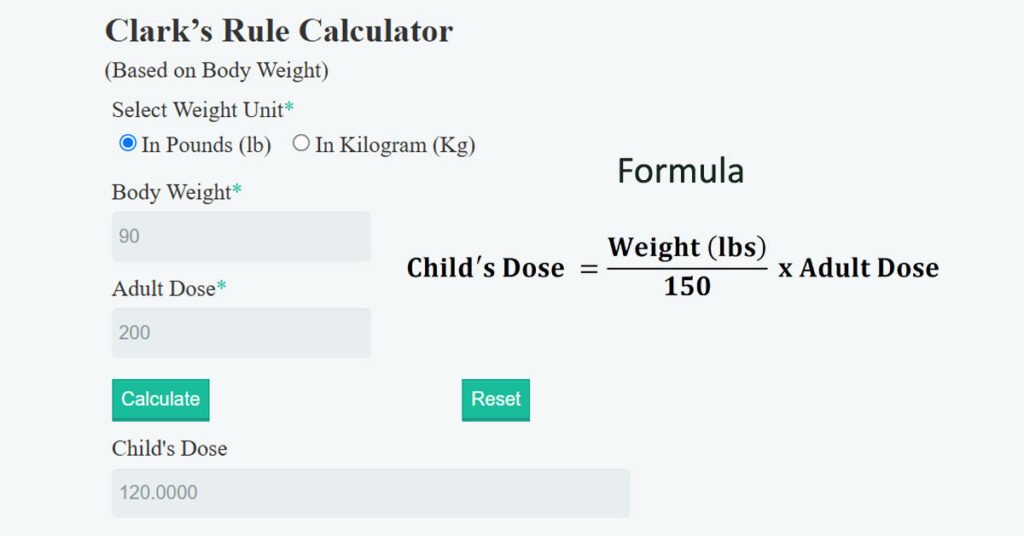Fried’s Rule Calculator, Age-Based Drug Dose Calculator
Use this Fried’s Rule Formula to calculate pediatric drug doses for children under 1 year of age! (Frieds Rule Calculator).
Fried’s Rule
Frieds Rule is another method used to calculate the correct dose of medication for the pediatric patient when given only the adult dose.
Use frieds rule to calculate an infant dosage for patients under 24 months of age when a proper dosage has not already been determined.
Fried’s Rule Formula
Express Frieds Rule Formula as the child’s age in months divided by 150, multiplied by the adult drug dose, to equal the pediatric drug dose.
Fried’s (Solomon) rule = [age(months)/150] × adult dose
Calculation Examples
Learn how to use Frieds rule formula to calculate pediatric drug doses.
If an adult dose of a particular medication is 50 mg, what is the dosage of a 10- month-old infant?
Answer:
Child dose= 10/150x 50 mg = 3.33mg of medicine
General Tips
- Check that your answer makes sense clinically.
- Triple check your work.
- Ask a colleague or pharmacist to check your work.
- Know general therapeutic drug doses for commonly administered medications.
How to Use Frieds Rule Calculator?
Age-Based Pediatric Drug Dose Calculator:
- Enter age in months.
- Enter adult drug dose
- Click on “Calculate” button.
- The calculator displays the child’s drug dose below.
Click here to calculate your Body Mass Index (BMI).
To calculate your Body Surface Are (BSA) click here.
Check our resources if you are interested in different measurements related to Child’s Drug Dose:
- Use the Clarks rule for the Weight-Based pediatric drug dose calculator.
- Utilize the Pediatric BSA Dose Calculator.
- Child Drug Dose Calculators based on age using:
- Youngs Formula
- Dilling’s Rule


